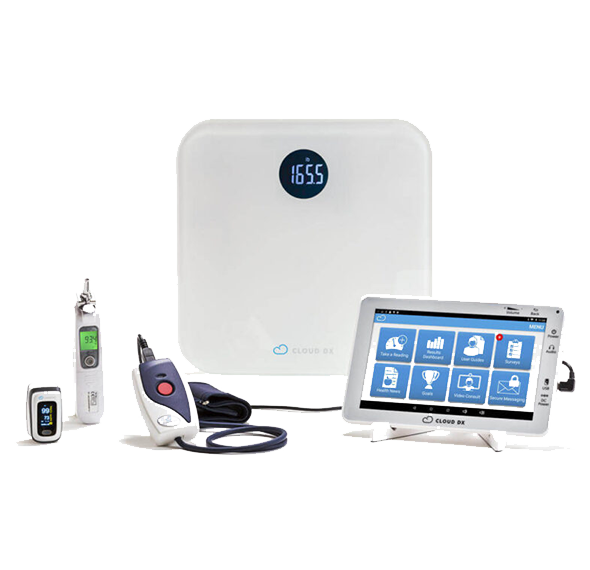Cirrhosis

Barriers to Adequate Cirrhosis Management
Effectively managing your patients’ cirrhosis is challenging in ways that may have not occurred to you.
Here are some of the challenges to keep in mind:
- If early measures are not taken to diagnose hepatic encephalopathy in cirrhosis patients, their survival can go from 12 years, down to approximately 2 years.
- Patients with cirrhosis have a 50% readmission rate within ninety days of being discharged from the hospital.
- Cirrhosis patients require the coordinated care of multiple specialists in order to effectively monitor their medications, perform regular laboratory monitoring, and schedule imaging.
- Many patients do not take the extra measures required to reduce their risk factors, such as managing their diet, exercise and overall lifestyle.
Solutions to Improve Care Outcomes
- Population Health Risk Scoring and Risk Stratefication
- Disease Specific Care Pathways
- Referral Coordination
- Seemless TeleHealth Video Conferencing
- Health Coaching
- Nutrition
- Exercises
- Wellbeing
- Social Services
Blogs
5201 Memorial Dr. Ste 529
Houston, TX 77007
Department Hours
- Monday-Friday 8:00 - 20:00
- Saturday 09:00 - 14:00
- Sunday Close
Why Smartcare360°?

Expanded Access to Providers
Geographic and socio-economic restrictions are lifted through RPM and leads to better access for patients who live in remote locations.

Cost Effectiveness
The primary advantage of RPM is its cost-effectiveness. As diabetic care seriously impacts patients’ finances, in the long run, it proves to be more reasonable, financially. With SmartCare 360, you can cut costs and see an increase in revenue within two days of implementation.

Follow-ups
Adherence is a crucial component of diabetes management. Regular, timely checkups are vital for diabetic patients. With RPMs, your patients can monitor their blood-sugar levels, plan diets, and get appropriate consultation right from their homes.

Telehealth and Care Management
Incorporating RPM in diabetic care enable better access to care, improved adherence, and better-managed symptoms. It also facilitates lifestyle modifications to improve overall patient health.
With the all-inclusive wellness program created by MRG Health, practices that adopt RPM and CCM can expect to see a boost in their bottom line by $10,000 per month for every 400 patients.
MRG Health’s $0 Implementation Cost Solution for Your Practice or Organization?
Clinically-proven to significantly get patients’ congestive heart failure under control and improve overall health, in a safe and effective manner.
Get the help of smart technology to effectively manage your patients’ care even when your staff’s off-hours. Our RPM, CCM, PCM, and RTM technology is there for your patients wherever they go, whether they are at home, at work or on vacation. Your patients will get the care they need, reducing the stress and burden on your staff.
Value based virtual care services increase profitability for any practice in two ways: Reducing internal staffing costs and increasing overall revenue.
By providing physicians with real-time data, virtual care services can be used to improve care delivery, avoid potential complications, and cut expenses overall.
In addition, physicians who implement these virtual care services can qualify for special grants from the government or other organizations that help to offset the cost of care and bring in revenue for immediate use.
As a result, healthcare practices and organizations who adopt SmartCare 360
virtual care services can expect to see a boost in their bottom line of $10,000 per every 400 patients.
Clinical Research Demonstrates Virtual Care Improves Cirrhosis Outcomes
Virtual care is now becoming a vital tool for providing cirrhosis patients with the best care possible. As of today, about 1 in 200 adults ages 45 to 54 in the United States are struggling with cirrhosis. While that may seem worrisome, there is a bright side–as long as patients and providers do their due diligence to continuously monitor their health and symptoms, they can expect better health and an improved quality of life. With RPM (remote patient monitoring), all of this is possible and more. Physicians can use their mobile devices to quickly identify any changes or problems the patient may be experiencing and then make necessary adjustments to the patient’s care plan. Education to promote self-care and healthy lifestyle further aids patients dealing with cirrhosis to take better care of themselves when they’re at home. When virtual care is effectively implemented in conjunction with consistent traditional care, patients experience a reduced number of recurrent admissions and hospitalizations and better health outcomes.






































